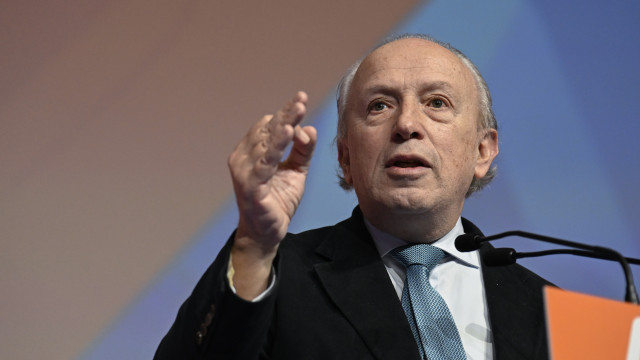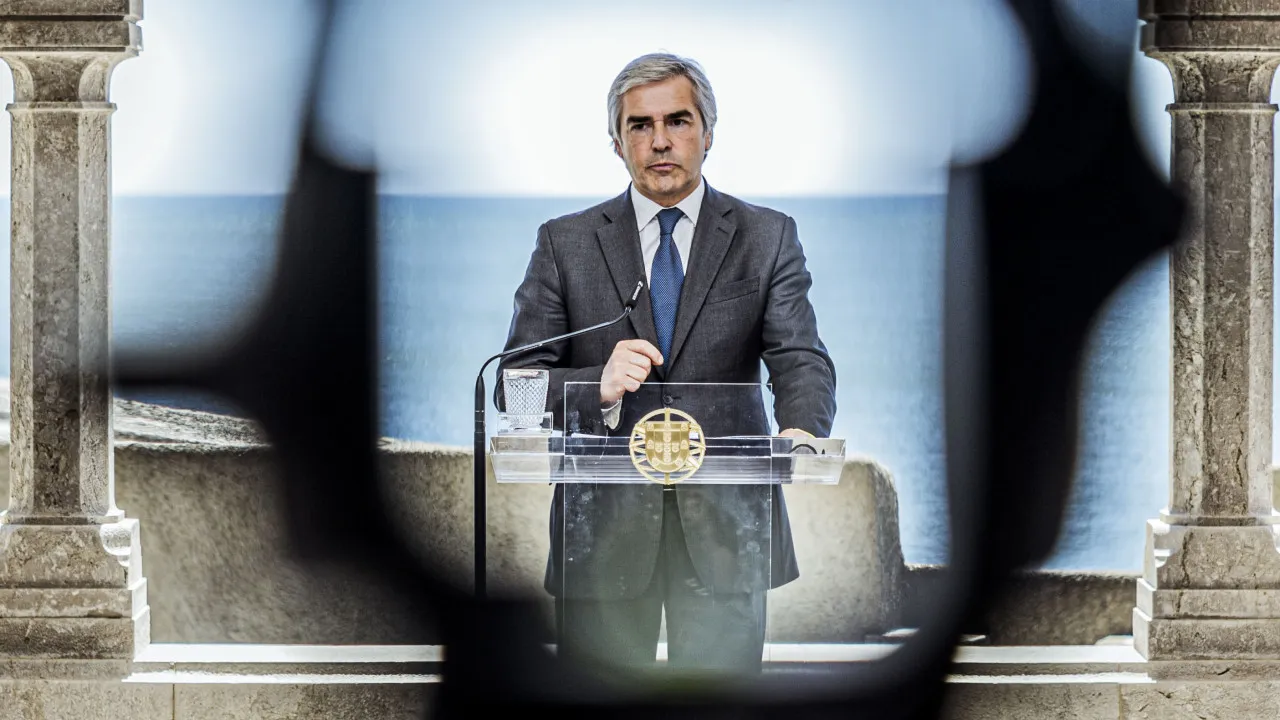
This Thursday, May 1, marks International Workers’ Day, a time for reflection on the business environment, particularly regarding organizational structures and the role of leaders. What constitutes a ‘good leader’? What qualities are essential? How does leadership influence employee performance?
Marina Almeida, a business advisor with over two decades of experience with companies like Airbus, Galp, RAR, Martifer, and Filinto Mota, among other European projects, expresses in an interview that we must stop “romanticizing fatigue as a synonym for dedication.” She argues that leaders should have “space to think, lead, and manage their own energy” and highlights the importance of task delegation.
In Marina Almeida’s view, impactful leaders are not those who “control everything,” but rather those who have “the courage to trust”.
The best results do not come from those who do more, but from those who lead better
What is the significance of good leadership in a company?
Leadership is the foundation and cornerstone of any organization. Conscious leadership not only defines strategic direction but also sets the pace, tone, and culture of the organization. A business is invariably a direct reflection of its leadership.
Leadership involves creating context, establishing clear priorities, making intentional decisions, and positively influencing team behavior. It affects all levels of the company.
An absent or confused leadership results in disorganized environments, low productivity, demotivation, and lack of focus. Conversely, structured and present leadership, which knows how to balance performance with humanity, cultivates a fertile ground for sustainable growth.
The best outcomes come not from those who do more but from those who lead better. It’s no coincidence that companies with good leaders tend to be more profitable, stable, and humane.
A leader has the responsibility to serve as a reference of coherence and direction (…) when a leader changes, everything can change
What role do leaders play in the structure of a company?
Leaders are the backbone of business structure. They ensure alignment between the company’s vision, strategy, and ground-level execution. They are the primary custodians of organizational culture and clarity in communication. Consistent leadership ensures not only a functional team but a structure that adapts, evolves, and grows sustainably.
More than occupying a hierarchical position, a leader has the responsibility to be a reference point of coherence and direction. When a leader communicates clearly, makes intentional decisions, and fosters an environment where there is room for learning and shared responsibility, the entire business structure benefits. Additionally, leaders ensure resources are well allocated, processes serve objectives, and there is a functioning ecosystem that supports growth.
Thus, when a leader changes, everything can change. And as a leader develops, so does the entire company.
Good leadership inspires, guides, and propels. A disconnected or dysfunctional leadership generates fear, confusion, and stagnation (…) leadership has a multiplier effect: what the leader feels, thinks, and does spreads throughout the organization
How does the leadership quality (be it good or bad) influence employee performance?
Good leadership inspires, guides, and propels. A disconnected or dysfunctional leadership generates fear, confusion, and stagnation. The leader’s behavior and emotional state directly influence the organizational climate, team commitment, and quality of collective performance.
A leader who communicates clearly, trusts and delegates, provides constructive feedback, and is emotionally present creates a safe environment where people feel motivated to contribute and give their best. Conversely, an absent, controlling, or unstable leader can generate fear, emotional exhaustion, and a culture of ‘getting by’.
The leader’s internal state is contagious. If they are chronically stressed, anxious, or unfocused, it reflects in how the team works, interacts, and delivers results. Leadership has a multiplier effect: what the leader feels, thinks, and does propagates across the organization.
Therefore, working on leadership is, in practice, enhancing company performance. No strategy works effectively in an environment filled with fear, disorganization, or lack of coherence. When the leader thrives, the business follows. And when the leader is well, the team has room to grow and evolve.
Leaders living in survival mode don’t have time to think about the business, only to react to its demands
Why do you argue that “CEOs and founders are burning out, and burning their teams with them”?
Because many leaders remain tied to operations, burdening themselves with tasks, trying to control everything, and neglecting self-care. This constant pressure and lack of structure are pushing many CEOs into states of exhaustion. An exhausted leader not only loses clarity but also transfers this chaos to the entire team. But more than a matter of work hours or task volume, the real issue is the absence of mental and strategic space. Leaders in survival mode don’t have time to think about the business, only to react to its demands. And when this becomes the norm, a vicious cycle forms: the more the leader tries to compensate for disorganization with extra work, the further they drift from true leadership.
We urgently need to stop romanticizing fatigue as a synonym for dedication. (…) CEOs need space to think, lead, and manage their own energy
This overload directly affects the team’s morale: it increases turnover, reduces motivation, and undermines work quality. Employees feel the weight of the leader’s fatigue, the lack of clarity, and absence of direction. The top direction contaminates the entire structure.
We urgently need to stop romanticizing fatigue as a synonym for dedication. True commitment creates sustainable results, not just immediate ones. For this, CEOs need space to think, lead, and manage their energy. Without this, no business can withstand the pressure, nor can the team endure it.
Is there an excess of pressure on leaders and, as a result, on the rest of the team?
Yes, especially in small and medium enterprises, where the CEO often also serves as manager, salesperson, and executor. The lack of processes, absence of intelligent delegation, and culture of urgency provide fertile ground for a cycle of continuous pressure.
These leaders end up caught in a constant “problem-solving” mode; overwhelmed schedules leave no room for reflection or planning. Over time, this pressure seeps into the company’s culture: teams are constantly playing catch-up, priorities shift unpredictably, and stability gives way to anxiety.
[A good leader] knows how to manage themselves before managing others
Moreover, many of these leaders feel they cannot show vulnerability or ask for help, intensifying isolation and overburden. This dynamic of forced self-sufficiency not only harms their emotional, mental, and physical health but also stifles the team’s growth, as it becomes solely dependent on top management for every decision.
A culture of sustainable performance begins by recognizing that no leader can (or should) handle everything alone. Through structure, clarity, and shared responsibility, pressure is alleviated, creating an environment where there is space to grow without collapsing.
What traits should, in your opinion, define cohesive and functional leadership?
Clarity, empathy, consistency, and decisiveness. A good leader knows where they want to go, communicates truthfully, and organizes processes that allow the team to act autonomously. Furthermore, they know how to manage themselves before attempting to manage others.
Cohesive leadership promotes alignment between vision, culture, and daily execution. It does not change direction with every obstacle but adapts with determination and active listening. A functional leader creates a safe environment where each team member feels they can contribute, make mistakes, learn, and grow.
Clarity prevents misunderstandings, empathy builds connections, consistency generates predictability, and decisiveness creates movement. Together, these four elements form a solid foundation for a high-performance culture with human balance.
Additionally, cohesive leadership integrates performance with well-being. It listens, provides feedback, recognizes talent, and takes responsibility. It is leadership that does not control but influences; does not overload but empowers; does not shine alone but builds a strong and collaborative ecosystem.
Today, more than ever, the world needs whole leaders ready to make meaningful decisions. The quality of leadership determines the quality of businesses, companies, and the people within them.
How do you create a sustainable work culture?
By providing present and coherent leadership. A sustainable culture emerges from well-defined values, clear processes, and a team that feels they can contribute, grow, and be heard. Sustainability is not just financial; it’s also emotional and relational.
Creating a sustainable work culture requires intentionality. It means designing an environment with clear expectations, transparent communication, and consistency between words and actions. It respects human pace and promotes a balance between performance and well-being.
It involves creating spaces for constructive feedback, celebrating achievements, and learning from mistakes without fear. It also implies implementing moments that reinforce the team’s identity, align objectives, and keep the common vision alive.
The biggest challenges reside within the leader themselves. (…) they carry the burden of “having to handle everything”
A sustainable culture endures even when the founder is absent. It values ongoing development, cross-collaboration, and commitment to something greater than just profit. Companies like this retain talent, innovate consistently, and build long-term reputations.
At the core of this culture always sits the leader. They set the tone, define the pace, and ensure that values do not remain mere wall adornments, but live daily for the entire team.
Given your experience and the scenarios you’ve observed in various companies, what are the main leadership challenges?
The biggest challenges reside within the leader themselves: fear of delegation, difficulty communicating assertively, resistance to change, and the tendency to prioritize the business over personal well-being.
Many leaders carry the burden of “having to handle everything.” This belief, although common, leads to overload, excessive control, and the inability to build truly autonomous teams. Another recurring challenge is shifting from an operational to a strategic mindset—this requires time, introspection, and the ability to trust.
Perhaps the most invisible challenge: self-care as a leader. (…) An exhausted leader poses a risk to the company’s future
There’s also the challenge of coherence: aligning what is said with what is practiced. In an era where leadership is closely observed, any dissonance between words and actions can profoundly affect a company’s culture.
Additionally, leading amidst uncertainty and constant change demands emotional agility and a willingness to continually learn. Leaders who do not develop personally end up repeating dysfunctional patterns and hindering their business’s growth.
Finally, perhaps the most invisible challenge: self-care as a leader. Many managers neglect their well-being, rest, and mental clarity in the name of “commitment to the business.” But an exhausted leader poses a risk to the company’s future. It’s vital that a leader’s development keeps pace with the company’s growth. Always.
When designing a plan for a company, what factors do you consider?
I always consider four pillars: financial, commercial/customers, processes, and people/leadership. Without balance among them, sustainable growth is unattainable. The plan should reflect not only goals but also the company’s DNA and the identity of those leading it.
Every plan I design starts from the current state of the business and its leadership. A diagnosis involving numbers, processes, and, above all, human dynamics taking place within the company is essential. A plan is viable only if it considers the tangible reality and actual resources of the business.
The financial component provides the sustainability direction. The commercial aspect reflects market impact. Processes ensure consistency and scalability. The people and leadership pillar reveals the company’s culture, its ability to reinvent, and mobilize teams. Without these four vectors in harmony, any plan risks remaining mere theory on paper.
I also take into account the maturity stage of the company, leadership, decision-making systems, and long-term vision. A well-crafted plan respects the business’s pace but challenges it to advance. It’s not just about setting objectives, but building foundations that enable achievement with clarity, predictability, and impact.
What is the profile of individuals who should undertake leadership roles? How can the human factor and business sustainability work together?
Leadership isn’t about having all the answers. It’s about asking the right questions, listening deeply, and acting consistently. The most effective leaders are those with the courage to know themselves, learn continuously, and care for their teams as a central strategy part. The human element is the heart of a business. Companies that care for people grow with more predictability, humanity, and profit.
The ideal leader profile isn’t solely defined by technical skills but by self-awareness, active listening, systemic vision, and empathetic leadership.
The most impactful leaders aren’t those who control everything but those with the courage to trust, delegate, and create space for others to grow
A true leader knows how to regulate their emotions, has clarity about their mission, and can inspire without imposing. These leaders understand that people are the most valuable company asset. Motivated, safe, and engaged teams produce more, innovate more, and stay longer.
On the other hand, a business’s sustainability is ensured when the human factor is integrated from the start: in decisions, processes, and culture. Long-term successful companies treat their people as part of the solution, not as disposable resources.
In my experience, the most impactful leaders aren’t those who control everything but those with the courage to trust, delegate, and allow others to grow. The future belongs to conscientious leaders committed to sustainable results for the business and those who make it happen.




